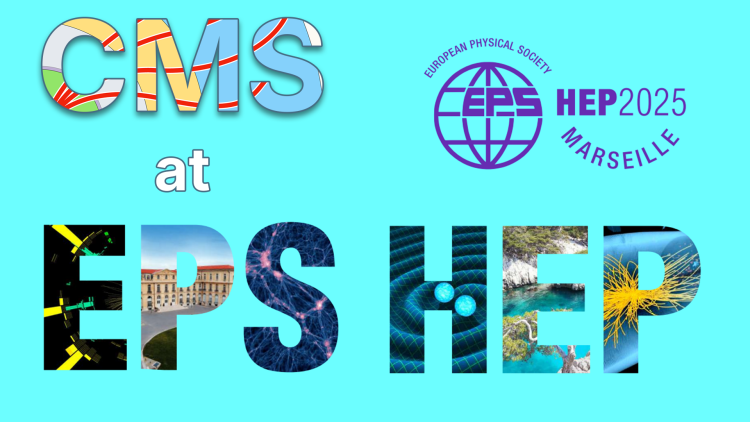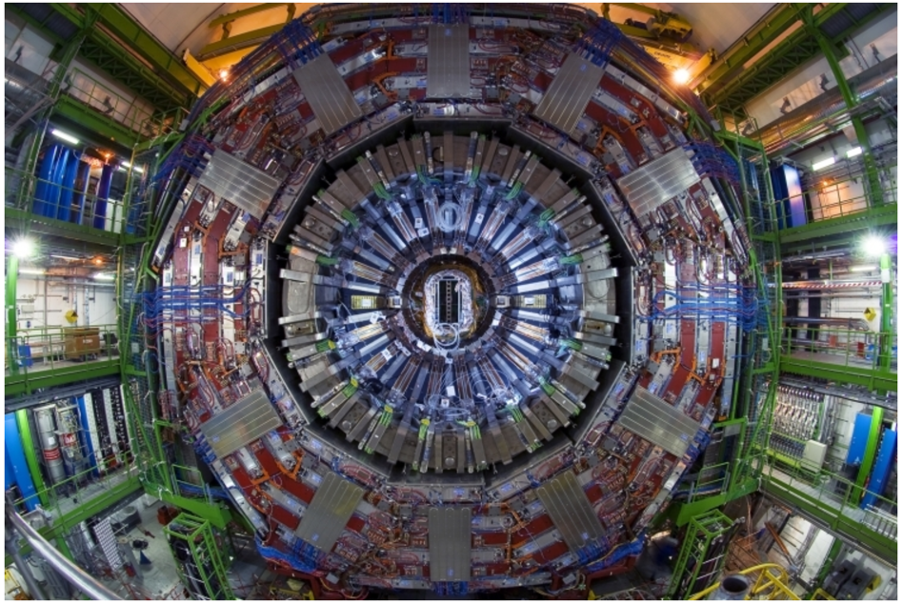
The CMS experiment announces new results for the EPS-HEP conference 2025 in Marseille. The new results comprise searches for new phenomena using exotic signatures to precision measurements of standard model processes. Links to the Physics Analysis Notes for EPS-HEP and to briefings will be added to this page throughout the conference, as the new results are presented and the notes are made public. In the following, a subset of the results is highlighted.
Searches for new phenomena
- For Run 3, the reach of the CMS experiment for so-called exotic signatures, such as long-lived particles, was significantly increased, and new trigger strategies were developed. CMS releases a preliminary version of a detailed report about “Long-lived particle triggers at CMS: strategy and performance during early LHC Run 3” (EXO-23-016).
- The search for decays of the known 125 GeV Higgs boson into two light bosons which then each decay further into two fermions or bosons are important components of the program to fully explore the properties of the Higgs boson. For EPS-HEP, CMS presents a new result with sensitivity to boson masses as low as 400 MeV, in the channel H→aa→μμhh where h denotes a pion or a kaon (EXO-24-034).
Properties of the Higgs boson
- Possible anomalous couplings of the Higgs boson to vector bosons and fermions are studied using multivariate analysis techniques in the decay of the Higgs bosons into two photons. Competitive limits on anomalous couplings and CP-violating contributions are set (HIG-24-006).
- At the LHC, the ratio of the production cross sections for a Higgs boson in association with a W+ or W– boson is expected to show an asymmetry, due to the parton distribution functions of the proton favoring W+ over W– production. Significant deviations could hint to unexpected charm quark coupling to the Higgs boson. CMS presents a first analysis of this process and finds agreement with expectations within the currently large statistical uncertainties (HIG-24-019).
- Another first analysis presented by CMS is the search for events containing three Higgs bosons. With the current data an upper limit of about 3400 times the standard model expectation is set (HIG-24-015).
Using the LHC as a collider of photons
- At the LHC, photons radiate off the incoming protons, and “fuse” into a final state with two heavy W bosons. The process of WW production in photon-fusion is expected to be mediated by trilinear and quartic gauge couplings. Moreover, effects from the strong interactions can be suppressed experimentally. CMS presents a precise measurement of the cross section, with an uncertainty of about 13%, in agreement with standard model expectations (SMP-24-019).
|
Group and identifier |
Title of the study |
Full paper/PAS |
Physics briefing |
|
B2G-23-007 |
Search for heavy scalar resonances decaying to a Higgs and a Higgs-like boson in the Lorentz-boosted bb4q final state |
|
|
|
EGM-24-002 |
Highly boosted dielectron identification in proton-proton collisions at √s = 13 TeV |
||
|
EXO-23-016 |
Long-lived particle triggers at CMS: Strategy and performance in proton-proton collisions at √s = 13.6 TeV |
|
|
|
EXO-24-016 |
Search for long-lived particles decaying into muons in proton-proton collisions at √s = 13.6 TeV using the CMS scouting data sets |
|
|
|
EXO-24-020 |
Search for the pair production of long-lived supersymmetric partners of the tau lepton in proton-proton collisions at sqrt{s}=13 TeV |
|
|
|
EXO-24-025 |
Search for exotic Higgs boson decays H → AA with A → γγ in events with a partially merged topology in proton-proton collisions at √s = 13 TeV |
||
|
EXO-24-033 |
Search for long-lived particles using displaced vertices with low-momentum tracks and missing transverse momentum in proton-proton collisions at √s = 13 TeV |
|
|
|
EXO-24-034 |
Search for light scalar particles from Higgs boson decays in exclusive final states with two muons and two hadrons |
|
|
|
HIG-24-003 |
Search for associated production of a Higgs boson and of two vector bosons via vector boson scattering |
|
|
|
HIG-24-006 |
Constraints on anomalous Higgs boson couplings to vector bosons and fermions analyzing the gamma gamma final state |
||
|
HIG-24-015 |
Search for triple Higgs production in Run2 data of CMS using 4b2gamma final state. |
|
|
|
HIG-24-019 |
Measurement of the charge asymmetry in WH production in the H to tau tau decay channel |
|
|
|
MLG-23-002 |
Machine-learning techniques for model-independent searches in dijet final states |
|
|
|
SMP-22-003 |
Simultaneous measurements of N-subjettiness observables in light-flavour quark and gluon jets, and in hadronic decays of boosted W bosons and top quarks |
|
|
|
SMP-24-012 |
Measurement of the jet mass and W boson mass in hadronic decays of boosted W bosons at 13 TeV |
||
|
SMP-24-019 |
Measurement of the photon-fusion production cross section of a pair of W bosons |
|
|
|
SUS-21-005 |
Search for new physics using single-lepton events with high jet and b jet multiplicities in proton-proton collisions at √s = 13 TeV |
|
|
|
SUS-23-013 |
Search for dark matter produced in association with a dark Higgs boson decaying into a bottom quark pair in proton-proton collisions at 13 TeV |
||
|
TOP-24-011 |
Measurement of the t-channel single top quark cross section in pp collision data at sqrt(s) = 5.02 TeV |
Read more about these results:
-
@CMSExperiment on social media: Bluesky - Facebook - Instagram - LinkedIn - TikTok - Twitter/X - YouTube

